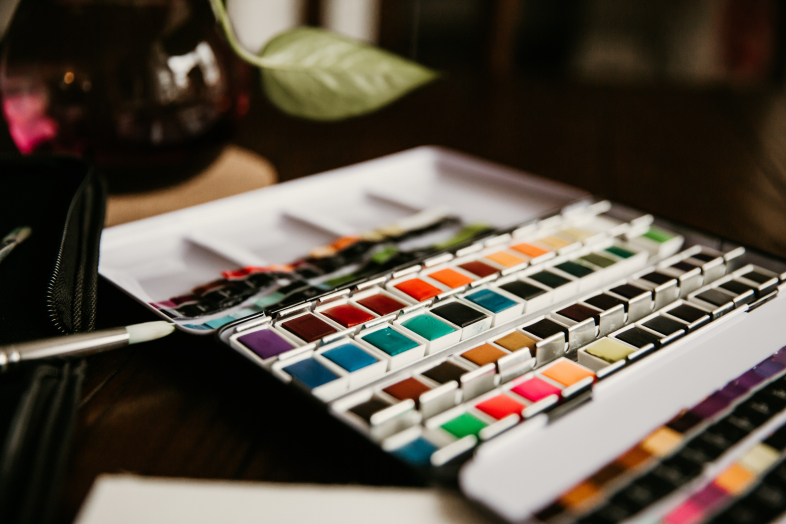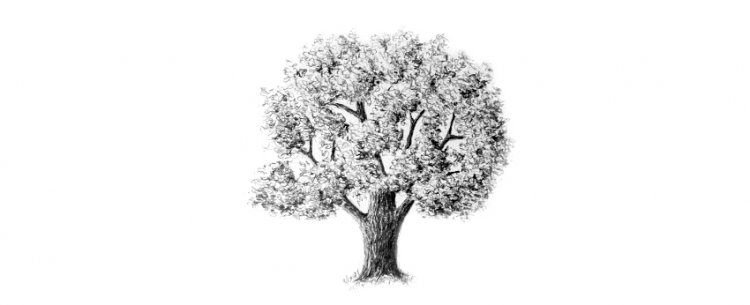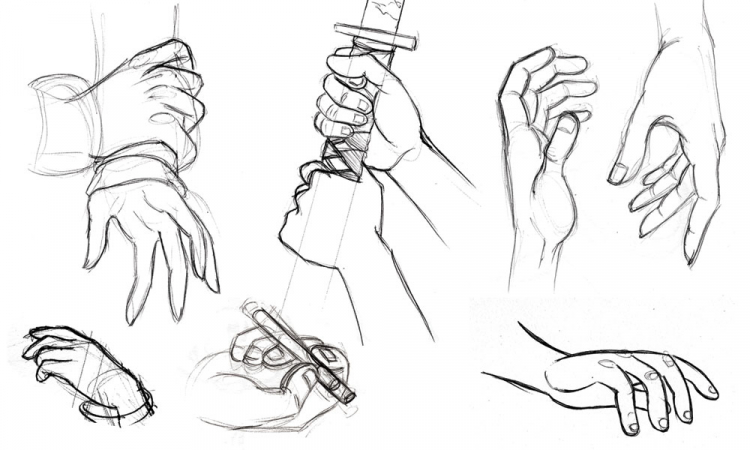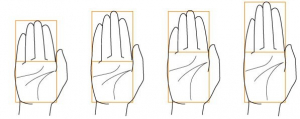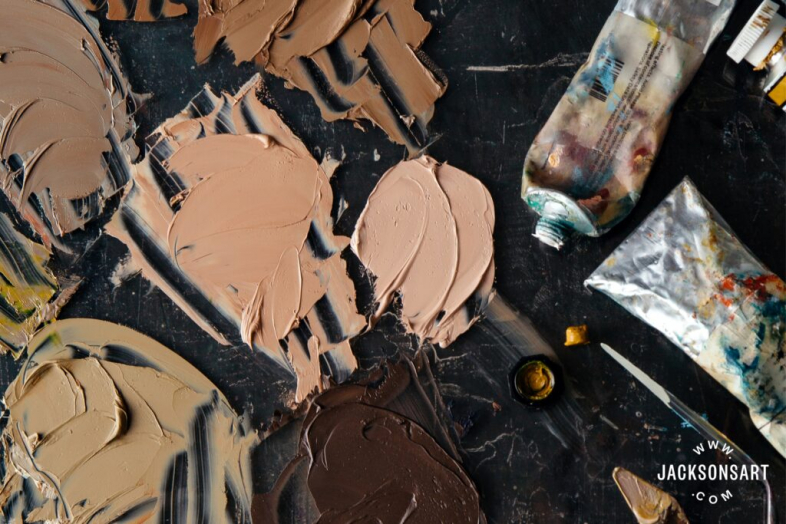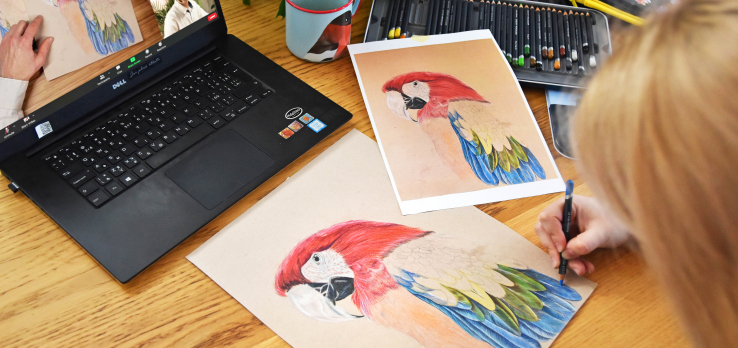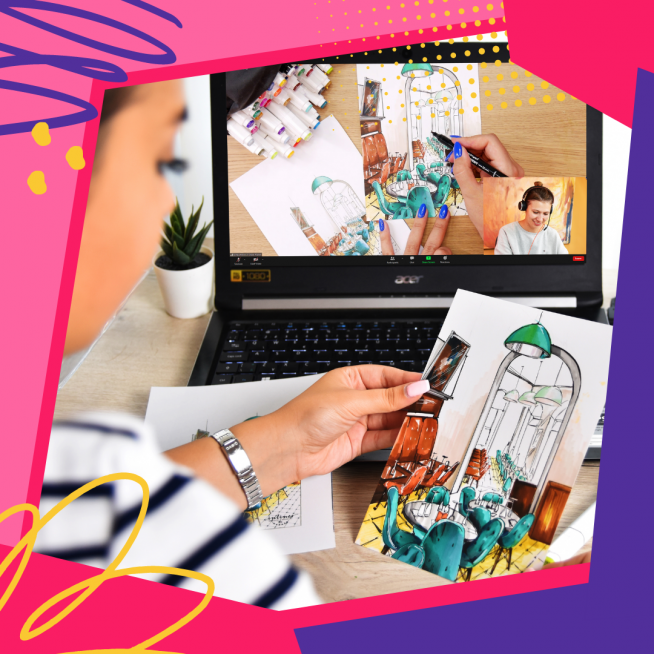Drawing emotions
4. February 2022
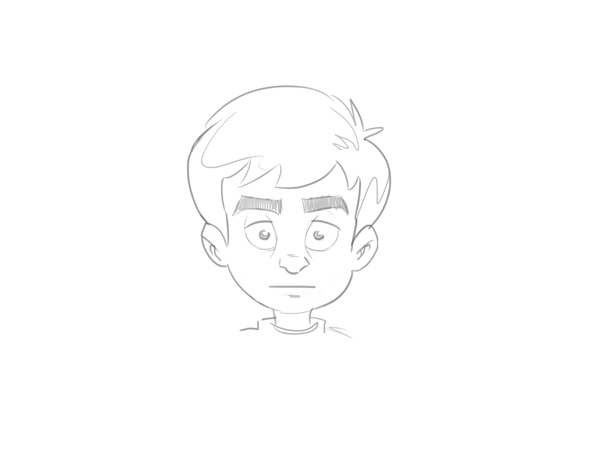
There are millions of eyes, ears, mouths, and chins around the world, and each of them is unique. However, they share some basic features that you need to get down to draw nice faces. And if you want to make your drawings even better, you need to learn to capture emotions and facial expressions.
Anyone can draw a face, really – you can simply draw a circle with two dots for the eyes and a couple of lines for mouth and nose and call it a face. Yet despite the simplicity of the basic facial construction, most people struggle when it comes to drawing emotions.
What does a face do?
You can change your facial expression as easily as you can change the tone of your voice. One thing that we must understand is that facial expressions are not created just by muscle contraction – it’s a combination of some muscles contracting and some relaxing, and in some cases, like a smile and a laugh, the only difference is in the contraction intensity.
Basic emotions
Basic (primary) emotions are those that we can’t fully control – they manifest themselves automatically, with not much control from us. A basic emotion can happen out of the blue, for instance, when you instinctively react to an impulse.
These primary emotions express themselves universally, regardless of culture, race, or age. So which emotions are primary? Here are a few examples:
1. Happiness: corners of the mouth are pointing up, brows are raised, eyes are open.
2. Anger: corners of the mouth are pointing down, brows are wrinkled towards the nose bridge, eyes are open.
3. Fear: the mouth is curved with corners pointing down, the brows are pointing up, eyes are open.
4. Sadness: corners of the mouth are pointing down, brows are slightly raised around the nose bridge, eyes are narrowed, gaze is down.

These are the four facial expressions that we use most often. We can use the drawings of these four emotions to derive what other emotions will look like on paper.
There are two more emotions that are less frequent, but they are also a part of the primary emotions group:
5. Surprise: mouth is small and half open, brows are raised high, eyes are open..
6. Disgust: mouth is curved, brows are completely wrinkled, eyes are closed.

Notice that these two expressions are actually modified expressions from the first group.
Right now you are probably surprised by how few primary emotions there are. It’s really simple though – just like you can make different colours by mixing the basic ones together, you can also mix the primary emotions to create more of them – the secondary emotions. Take a look at this example if you don’t believe us.

Derived emotions
These are emotions that are based on the primary ones. When drawing them, you can change just one facial feature of a basic emotion to obtain new, more nuanced ones!

Notice that we only changed the mouth but got two very different expressions just by doing that! Here’s another example of how just one element can change the entire emotion:

Again, we only had to change the mouth to change the entire emotion.
We can also change both the eyes and mouth to create yet another emotion, still based on the primary ones.
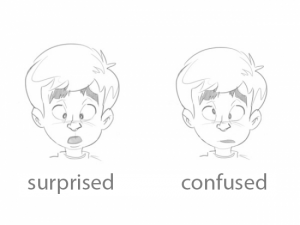
Furthermore, we can also combine and alter secondary emotions to create “tertiary” emotions! Just look at the example below:
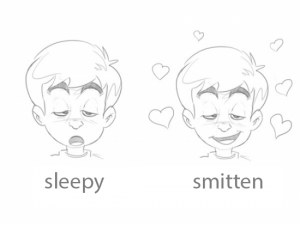
The only thing we changed was – again – the mouth.
Fascinating, isn’t it? You can create dozens or even hundreds of different emotions just by altering different facial features and combining different expressions!
Emotions expressing physical states
Emotions that show how we feel physically are close relatives of the primary emotions, but unlike them, they can take on individual, unpredictable forms.
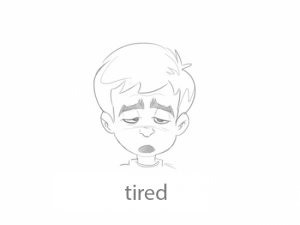
Notice that these “physical” emotions are, too, derived from the primary ones. Here you can see that tiredness is derived from sadness.
To make these “physical” emotions more prominent or specific, we can add extra features, like dripping sweat:
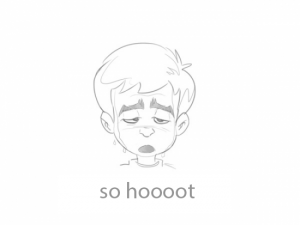
Now let’s take a look at a physical reaction we can’t fully control. Our poor character got a small electric shock, completely losing control over how they reacted.
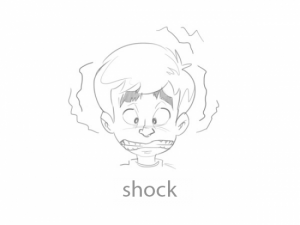
It is also important to keep in mind that primary emotions are the most frequent and prominent. Shock, however uncontrolled, is just a version of fear. The most interesting thing about the “physical” emotions is the fact that we experience them every day, without even realising it’s happening, with external factors and other conditions to blame for that.
Intensity and other elements
In cartoon drawing, there is no limit on the intensity of facial expressions, so we can play with it as much as we like.
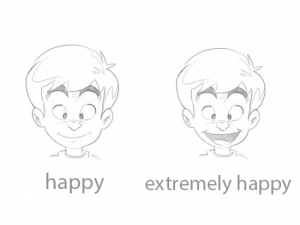
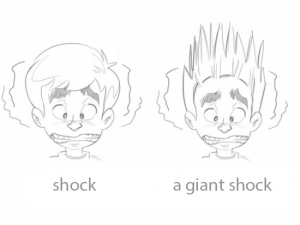
You can also add other elements to enhance emotions – like drops of sweat to enhance the feeling of fear, or a tongue sticking out to show how extremely disgusted our character is.
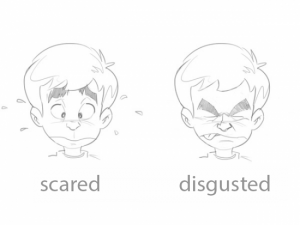
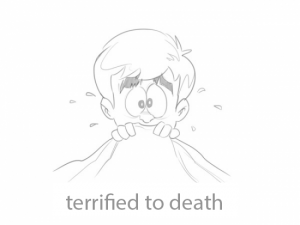
Would you like to explore emotions and facial expressions even further? Then come join us at our comic drawing course to get a ton of practice and learn to capture body language as well!

